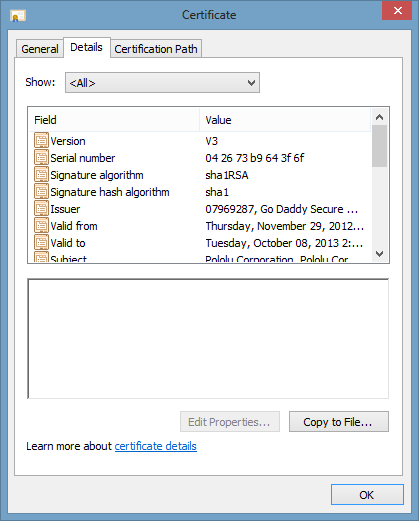

What are the drawbacks of this method? The process described in the above SO question needs admin privileges but installing drivers should need them anyway. Instead, people rely on booting to test mode or a third-party software (DSEO) which tampers with your system files to run such drivers. I won't have to make any other changes to the system (disabling test mode by pressing F8 on boot menu, messing with boot configuration flags such as TESTSIGNING or NOINTEGRITYCHECKS).Īm I correct? What are the obstacles, if any, that this method is not used more widely when people need to load drivers that have no proper digital signatures provided (such as old printer drivers etc.).

#CHECK CERT FILE DRIVER INSTALL#
To me, it looks like I would be able to install drivers with self-signed certificates (issued by a self-signed CA) as long as the CA cert was imported to the machine store. User store, which is fine for most software, for test/internal If you want to use this for signing drivers, you need to import the CAĬertificate into the machine store. However, the answer I linked to and especially one comment by Roger Lipscombe seems to provide a contradicting view:

I have read a lot of discussions online on how the driver signing works and the answer seems to be almost unequivocally that you can't load unsigned or self-signed drivers without having the test mode enabled. Here is a great SO answer which covers the creation of self-signed CA and then signing executables with the obtained certificates: How do I create a self-signed certificate for code signing on Windows?.


 0 kommentar(er)
0 kommentar(er)
